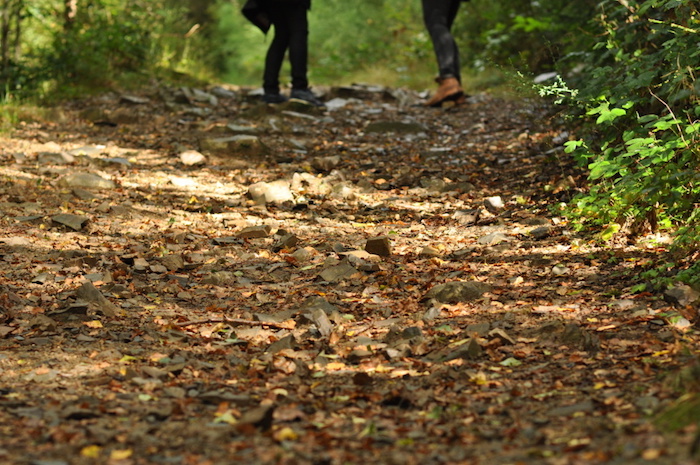Don't Burn Those Dry Leaves! Put Them To Good Use Instead

Turning dry leaves into valuable compost at home is quick and easy.
Trees prepare for the dry winter season by shedding their leaves and preventing moisture loss. Come the months of March and April, and new leaves will sprout to replace the old, drenching the city in tender greens and pinks.
I am fortunate to live in a neighbourhood with lots of trees. Every breeze shakes a few leaves loose, brings them twirling down to the ground, and before you know it, high piles of gold, rust and sepia have formed. This February, as the seasons turned, the crisp, dewy mornings were often pierced by a smell that I've come to know all too well, lately - the acrid smell of burning leaves.
Dried leaves are considered unsightly in cities and there are far too many instances of trees being felled only because we don't know what to do with all the shedding. Dry leaf piles are considered dangerous because they shelter rodents and snakes; and lack of space is commonly cited as a reason for why these piles are not better dealt with.
Dry leaves decompose naturally in the wild
And so, we've resorted to burning as a quick, easy way of dispatching the offenders. Ample evidence is available in the smouldering piles of dry leaves (often mixed with plastic and other kinds of waste) that dot our towns and cities and pollute the air.
Dry leaves are a farmer's and gardener's best friend. In a home composting unit or pit, they are the essential 'browns' or carbon ingredient that turn organic waste into compost. Gather the dry leaves from your garden or street and layer them between your kitchen rejects, turning the pile regularly. Shred them by hand if you want faster decomposition. You could save dry leaves in sacks for use during the rest of the year, too.
Soil and Health's integrated dry leaf and kitchen waste composters can turn up to 8 tractor loads of dry leaves into manure. Image: Courtesy Vasuki Iyengar
Ever wondered why a forest smells like it does? Earthy, wet, fertile. When dry leaves are left to decompose on their own on the forest floor, they break down into a rich, compost-like material or humus that holds moisture and shelters a variety of organisms beneficial to the soil. You can recreate this effect in your garden by mulching to conserve soil moisture and reduce the frequency of watering. Over time, the leaves break down, decompose and add organic matter to the soil. All you have to do is prepare a bed of shredded, dry leaves around the roots of your plants and water them to prevent them from being blown away in the wind. In a few weeks, once the leaves have decomposed, upturn the soil with your fingers. If you spot an earthworm, celebrate! Your efforts have paid off.
Harvesting leaf compost from a composter installed on temple premises. Image: Courtesy Vasuki Iyengar
In Bengaluru, leaf composters installed on street corners, in schools, churches, temples and apartment complexes are proving that, even in constrained spaces, dry leaves can be put to good use. One can also see leaf composting being done in a few public parks in enclosures specially designed for this purpose. Where they have been placed on streets, they have worked well by allowing municipal workers to dump dry leaves in them.
Vasuki Iyengar, founder of Soil and Health, which has installed 200 leaf composters, says the units are designed to take in a huge volume of dry leaves - up to 8 tractor loads - and yield rich compost. He explains that dry leaves compact up to 85 percent of their original volume and the the resulting compost occupies just 15 percent of the unit.
The units are designed to be rodent-proof and serve as an integrated solution for kitchen waste and leaf litter. Feeding a leaf composter with a nitrogen source: kitchen waste, flowers, citrus-peel bioenzyme, microbial cocopeat or semi-composted material from your home composting unit will keep its contents moist, hasten the decomposition process, and give you quicker compost yields, says Vasuki. Left to themselves with no turning, shredding, watering or maintenance, dry leaves in the unit will turn into compost in 9 months.
Black gold. Image: Courtesy Vasuki Iyengar
Looking for a zero-cost method to compost leaf litter? Then just leave it be. Sweep the dry leaves into piles under trees or on empty plots and leave them undisturbed. Wait for the rains and let nature work its magic - transforming them into fragrant, fertile, free manure! This method is especially useful for people with large gardens or those living in neighbourhoods with empty plots.
If you have trees in your garden or neighbourhood, you are lucky. Don't destroy the fallen leaves; make the most of them by collecting and using them to improve the quality of your garden and the food you grow.









